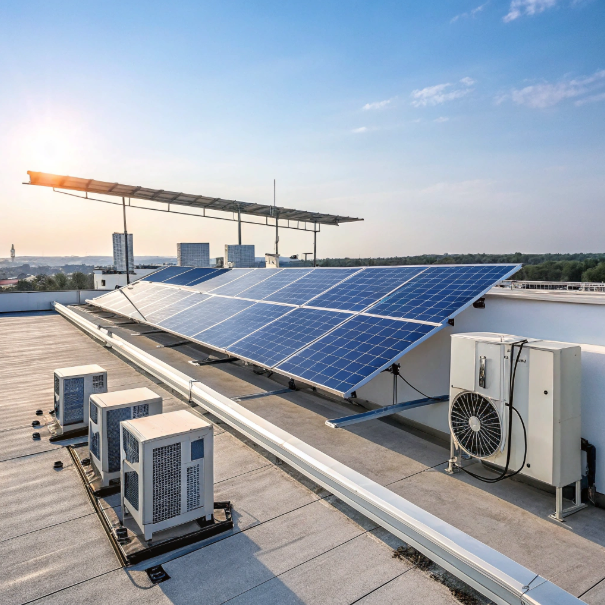Monocrystalline vs. polycrystalline vs. thin-film solar panels: Which technology is right for you?
by
Monocrystalline vs. polycrystalline vs. thin-film solar panels: Which technology is right for you?
Trying to choose between solar panel types feels overwhelming with so many technical specs to compare. But understanding their core differences can simplify your decision.
Monocrystalline panels offer the highest efficiency (15-22%) in limited space, polycrystalline provide budget-friendly moderate efficiency (13-16%), while thin-film is lightweight and flexible but least efficient (10-13%). Your choice depends on roof space, budget, and aesthetic preferences.
The solar panel market has evolved dramatically, offering several technologies with distinct advantages. Let's break down how these options compare in real-world applications to help you make the best investment for your specific needs.
Why do solar panels generate electricity even on cloudy days? Uncovering the secrets of low-light performance
Ever noticed your solar panels still producing power when the sun disappears behind clouds? There's fascinating science behind this capability.
Solar panels generate electricity on cloudy days because photovoltaic cells respond to diffuse sunlight, with monocrystalline panels typically maintaining 10-25% of their rated output due to superior electron mobility in pure silicon crystals.
Understanding Low-Light Performance Factors
Three key elements determine cloudy weather performance:
-
Cell Technology Differences
- Monocrystalline: 15-25% cloudy day efficiency
- Polycrystalline: 10-20% cloudy day efficiency
- Thin-film: 5-15% cloudy day efficiency
-
Spectral Response
- Monocrystalline better utilizes blue light that penetrates clouds
- Thin-film has broader light spectrum absorption
-
Temperature Effects
- Cooler cloudy weather can actually improve voltage output
- Rain helps clean panels for better subsequent performance
| Panel Type | Cloudy Day Output | Key Advantage |
|---|---|---|
| Monocrystalline | 15-25% | Best electron mobility |
| Polycrystalline | 10-20% | Balanced performance |
| Thin-film | 5-15% | Diffuse light adaptation |
The latest bifacial panel designs can boost cloudy-day performance by an additional 5-10% by capturing reflected light from the ground or roof surfaces. Manufacturers are also developing new cell coatings to better capture the unique light spectrum present during overcast conditions.
South-facing is best? How does the angle of solar panel installation affect year-round energy production?
Conventional wisdom says south-facing is ideal, but optimal angles depend on your location and seasonal energy needs.
While south-facing at 30-45° provides the best annual production in northern latitudes, east/west installations can better match morning/evening usage patterns and often allow higher total system capacity on limited roof space.
Optimizing Panel Orientation
1. Latitude-Based Angle Calculations
- Ideal tilt = your latitude ± seasonal adjustments
- Example: 40°N location:
- Year-round: 40°
- Summer: 40° - 15° = 25°
- Winter: 40° + 15° = 55°
2. Azimuth Variations
- True south (180°) vs magnetic south variations
- 15° east/west deviation causes <5% annual loss
- East-facing (90°): 15-20% less annual but better morning production
- West-facing (270°): 10-15% less annual but better afternoon/peak rate periods
3. Seasonal Tradeoffs
- Vertical winter position: +25% winter, -60% summer
- Flat summer position: +10% summer, -50% winter
| Installation Type | Annual Output | Seasonal Variance | Roof Space Needed |
|---|---|---|---|
| Ideal south tilt | 100% baseline | Moderate | High |
| East-west split | 85-90% | Low | Lower |
| Vertical facade | 60-70% | Extreme | N/A |
Advanced mounting systems now offer seasonally adjustable racks that can boost annual production by 5-8% compared to fixed installations. Micro-inverter systems help mitigate shading losses from non-optimal angles.
What to do with discarded solar panels? The latest developments in photovoltaic recycling technology
With the first wave of solar installations reaching end-of-life, recycling solutions are rapidly evolving to handle this coming tsunami of PV waste.
Modern solar panel recycling can recover 95%+ of materials through advanced processes that separate glass, metals, and silicon. Emerging technologies like robotic disassembly and chemical delamination are making recycling more efficient as volumes grow exponentially.
The Recycling Process Breakdown
1. Collection & Transportation
- Developing regional collection networks
- Reverse logistics challenges for distributed systems
2. Mechanical Processing
- Frame removal (aluminum recovery)
- Glass separation (95% reusable)
- Thermal processing to loosen adhesives
3. Material Recovery
- Silicon purification for reuse
- Silver extraction from contacts
- Rare earth element recovery
4. Emerging Technologies
- Chemical baths to separate laminated layers
- Laser-assisted component separation
- Robotic disassembly lines
The industry is moving toward "design for recycling" principles with:
- Easier-to-separate materials
- Standardized panel dimensions
- Reduced use of hazardous substances
- Embedded recycling information in QR codes
Conclusion
Choosing solar panels involves balancing efficiency, cost, and space, while proper installation and future recycling plans ensure maximum long-term value from your investment.
Popular Posts
You may also be interested in:




